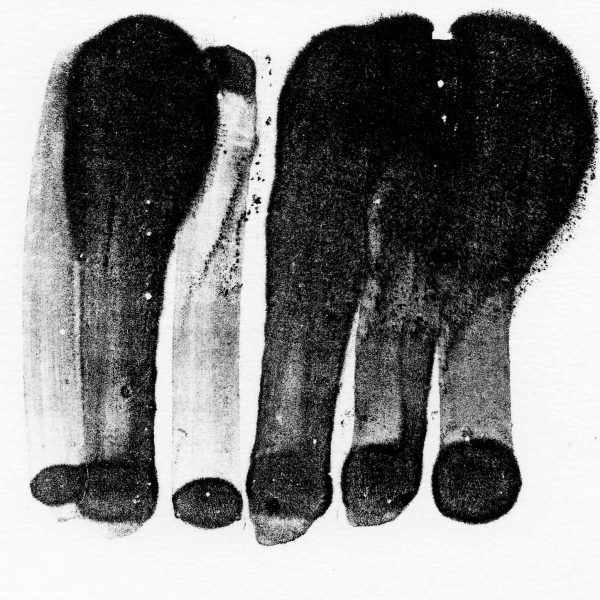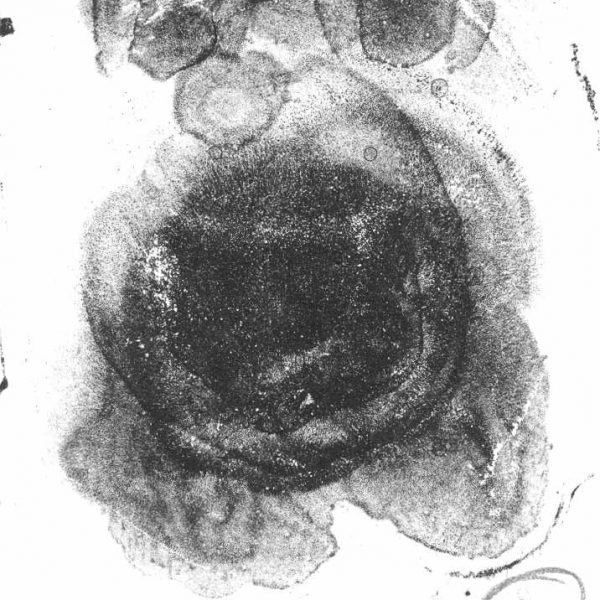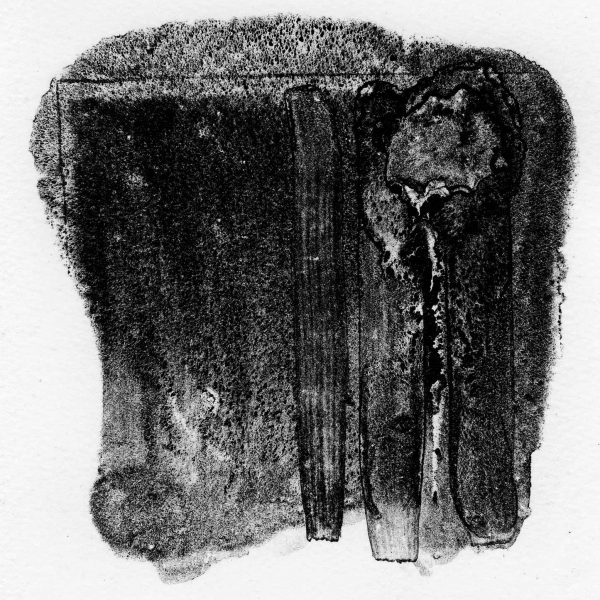Toner wash (alcohol based)
Materials:
- arabic gum
- nitric acid
- acetone
- loose toner (for photocopiers or laser printers)
- shellac solvent
- asphalt
- shellac
- rosin and talc

Alcohol-based toner washes look different than the lithographic ink ones. Alcohol quickly runs on the stone creating characteristic streaks. It also evaporates much faster than water, so subsequent layers can be applied in short intervals. Unfixed wash can be wiped with water without the need to grind or desensitize the stone. After fixing the toner wash (same procedure as in water-based toner), washes can be layered without the risk of damaging the drawing.
The toner used in this technique is an ordinary powdered toner for photocopiers or laser jets. It can be easily purchased from online stores (it’s much cheaper than lithographic touches).
As with all wash techniques, you can use various types of stencils, obstacles, salt etc. to obtain interesting effects.
It may seem problematic to fix the wash – either high temperature is needed (heat gun, heater – however, there is a risk that hot air will blow away the light toner powder) or acetone vapors. An acetone chamber can easily be made by yourself. Prepare a cardboard box bigger than the stone or the image and make it leak-proof with plastic tape. An absorbent material (e.g. a cotton towel) should be mounted inside the box in such a way that it does not fall onto the stone when we cover the drawing with the box. Soak the absorbent material with acetone splatters, cover the drawing and attach the edge to the stone (or the surface on which the stone stands) with adhesive tape to prevent the acetone from evaporating. After about 15-20 minutes the wash should be fixed. Check that the toner shines and does not rub under your finger. If it smudges and can be rubbed off – bake the drawing again in the acetone chamber.
Toner wash (all the drawings made with toner) can also be fixed by dragging the stone under the press with a sheet of paper soaked with acetone and covered with foil (so that the acetone does not evaporate too quickly).
All processes with acetone must be carried out quickly and in a well-ventilated room. Acetone evaporates instantly and its vapors are poisonous and flammable.
Mix toner with alcohol (shellac solvent – it is almost without water, denatured alcohol…). Toner mixes with alcohol much faster than with water, therefore the mixture can be used for painting immediately after preparation.
The edges of the stone may be covered with gum arabic and – if anhydrous alcohol was used to dilute the toner – they do not have to be taped with a plastic tape.
When the wash is dry and the effect is interesting, the drawing should be fixed either in an acetone chamber (description above), with an acetone soaked paper sheet under the press (description above) or using high temperature.
You can apply subsequent layers of wash on the image you have done, remembering to fix them each time.
The fixed drawing should be etched with gum arabic and nitric acid (depending on the density of the wash). Then, as usual, dry the stone and wash the drawing with acetone (turpentine will not remove it).
* The printing ink can be rolled directly onto the toner, but there is a risk that the roller will not reach everywhere (some areas of wash can have higher and lower parts) and, in the case of hard, short ink, the image can detach.
After removing the toner, the stone must be wiped with shellac and then asphalt. When the asphalt evaporates (5-10 minutes), the stone can be moistened and rolled up with printing ink.
Second etching depends on the drawing.




